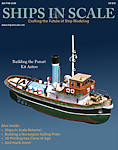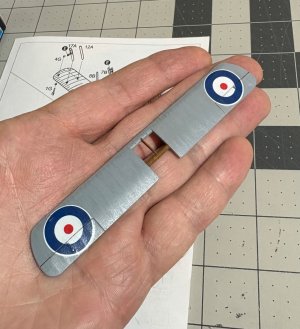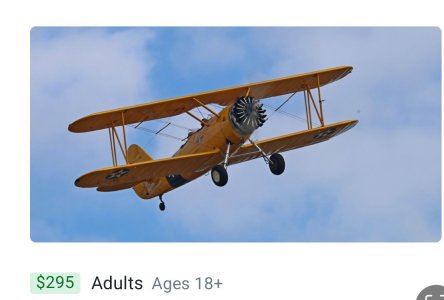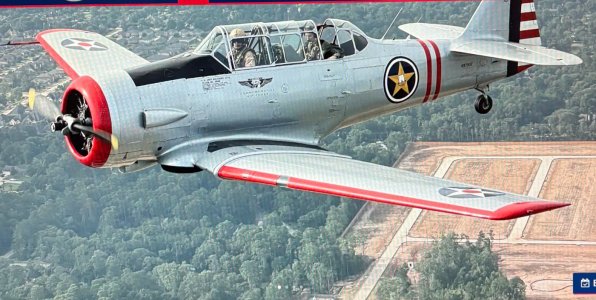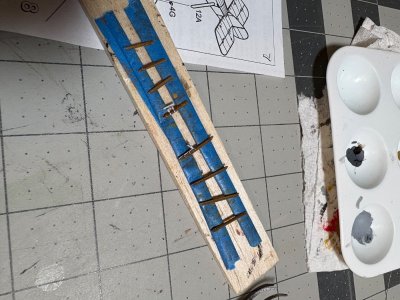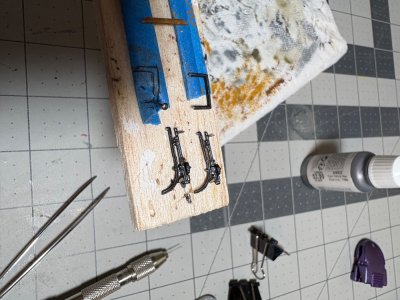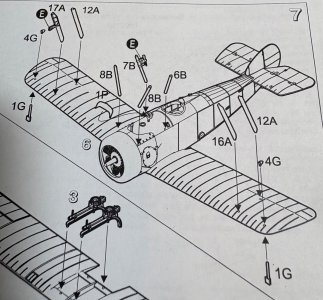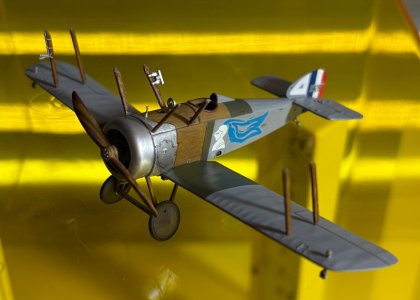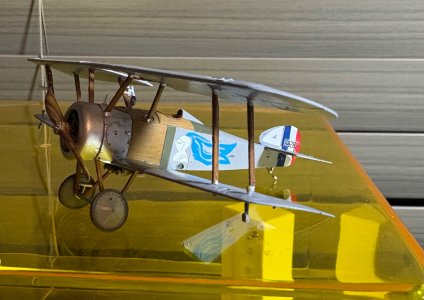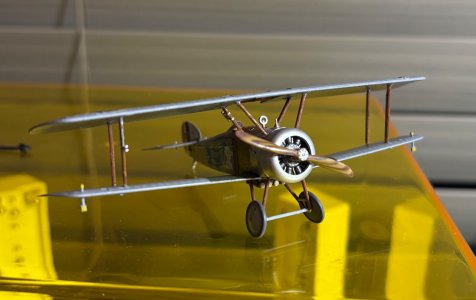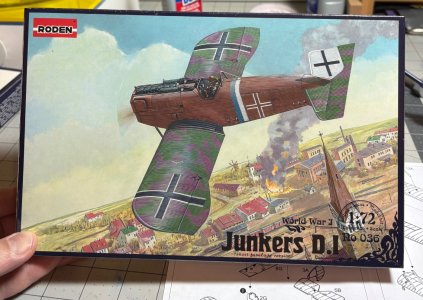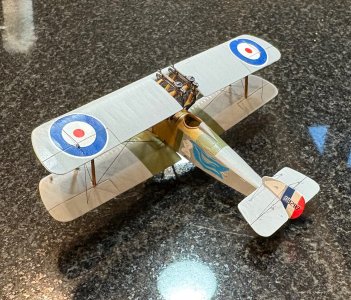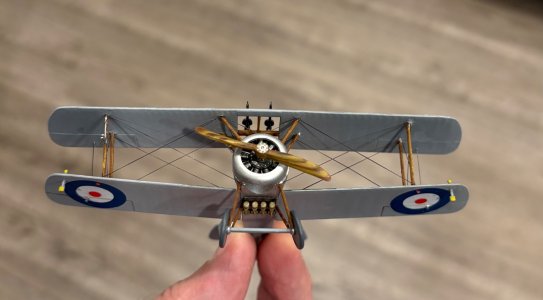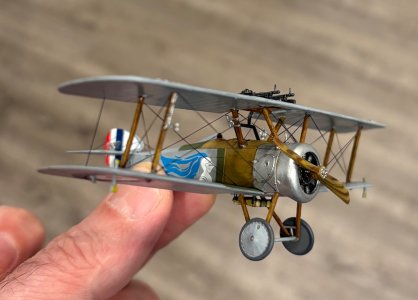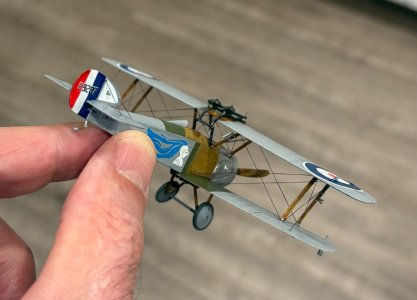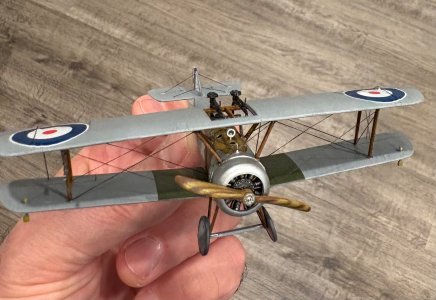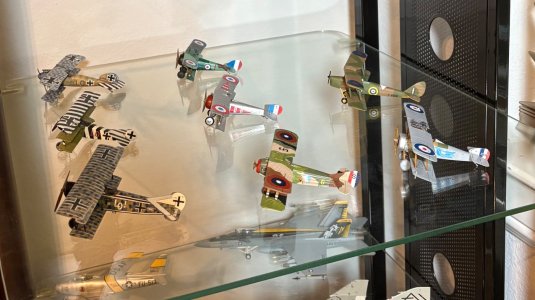Yes, I’m not sure how the navigation lights were powered, but they were there.When I read your last post Dean, I paused for a moment and thought, "Nav lights? On a WWI aircraft?? But there is no electrical system on those!"
So, I had to go down the rabbit hole and look it up. Reading the Wiki page, I discovered that the Comic variation was specifically designed for night fighting with the incendiary-ammo firing Lewis machine guns mounted over the upper wing and the cockpit moved rearward to allow the pilot to reload the guns. (Moving the C.G. back like that must have made an already squirrely, tail-heavy airplane even more-so.)
So, close your eyes for a moment and imagine this: It's 20 deg. F on a winter's night. You're in the cockpit of a Comic behind a mass of whirling iron (remember, the whole crankcase of a rotary engine spun with the propeller). There's no throttle control, the engine is either on (producing full power) or off - that's your only speed control. Using your handy scarf, you wipe the constant spray of castor oil from your goggles to better see your enemy. Realizing that your last encounter left your Lewis machine guns empty, you take your feet off the rudder pedals and your hands off the stick, and you stand up to to reload your guns - in the freezing cold - in the dark - all while the Red Baron was bearing down on you!
They were better men than I, my friends!
When I built my first WW1 airplane, the 1/16 scale Camel by Model Airways, I did a lot of research and reading. And I even bought a few books, one was by the US Ace Eddie Rickenbacher. Reading about how crude the airplanes were and how their survival rate was measured in weeks and months gives you a whole new appreciation for the pilots back then. Definitely real heroes! He described having the canvas on his upper wing rip off in a steep dive! He was able to limp it back to the hanger flying on the lower wing! Engine mishaps, guns jamming, freezing cold altitudes, running out of gas behind enemy lines, getting lost, etc. …you name it, those guys had the odds against them! Oh yeah, he spoke of drinking alcohol to help with the ingestion of the castor oil after a flight…probably needed a drink just to calm down!
Last edited:


